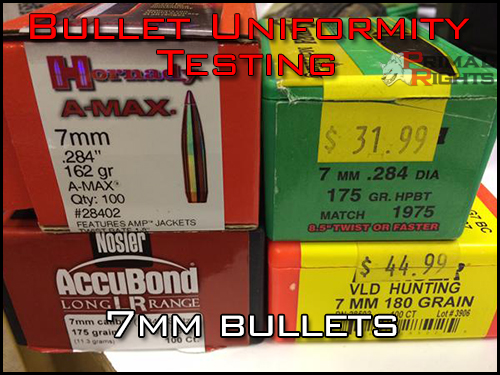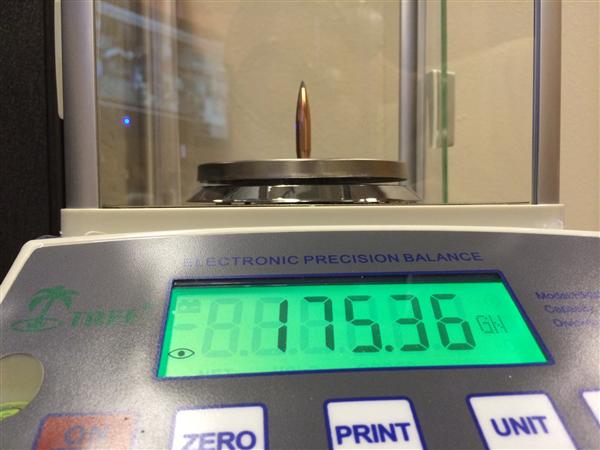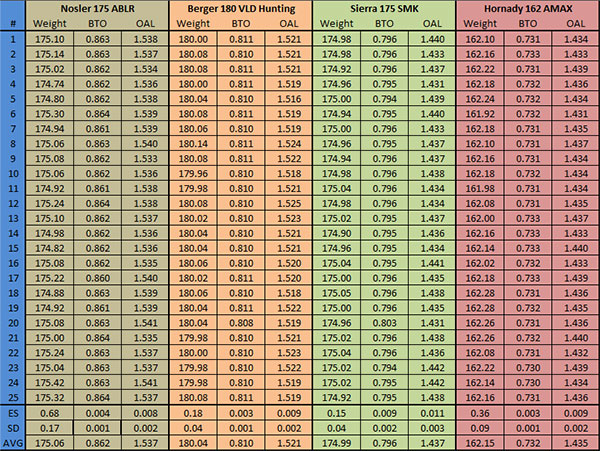
Even a novice handloader should know that the focus of identifying and uniforming all of the variables associated with producing loaded cartridges is one of the most important aspects to rifle accuracy. If all other aspects of physically firing a rifle are performed with exacting precision and repetition, and the rifle itself is straight and true, the ammo is usually the only root cause left if presented with unruly groups. If you do not have uniform components, then your loaded rounds will not be uniform either. Most often, handloaders concentrate on their powder charge and brass uniformity, but we don't often look at bullet uniformity. I decided to take some measurements of 4 different brands of 7mm bullets and compile the results here.
Unfortunately we lack the facilities to adequately live-fire these projectiles in a manner that would produce any valuable data. So I'll provide the numbers, and you can decide whether the variables would show themselves while shooting.
The scale used to weigh the bullets is a Tree HRB-203. This is an economical analytical scale which has a readability of 0.01gr, a repeatability of +/- 0.03gr, and a linearity of +/- 0.06gr. It is quite sensitive, and is certainly accurate enough to measure differences in bullet weights.

Here are the results:

Having done similar tests many times in the past, I can tell you that the trend shown here among the bullets tested, is pretty indicative of what each respective manufacturer is able to reproduce consistently. They are all about even in terms of length measurements, with only one bullet measuring long on base-to-ogive which made Sierra's numbers look considerably worse than they would have. When it comes to weight, Berger and Sierra are the clear victors. Hornady is in a very close 3rd place, and Nosler picking up a distant 4th. Having weight sorted several of these bullet makers products in various other 22cal, 6mm, 6.5mm, and 30cal offerings... this trend does not surprise me in the least. Sierra always stands out with their uniform yet cost effective offerings. Berger is always just a little bit better (marginally so) with a substantial cost penalty. Hornady is there with some very value-oriented bullets, with just a bit less in the way of quality control. Nosler has been all over the board in their weights for every bullet of theirs that I've ever decided to test. In some of their 30cal offerings, I've seen as much as 1.5gr swing across 50 bullets. This is quite disappointing, as these new ABLR bullets are generating quite a bit of intrigue, and seem to perform fairly well. Obviously if any of the bullets tested would benefit from weight sorting, it would likely be the Noslers!
As I said early on, it is difficult to quantify if these differences would result in any deviation showing up on the target, but it is interesting none the less. Perhaps it may be of some use to you.

